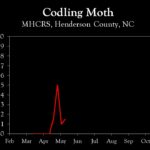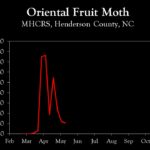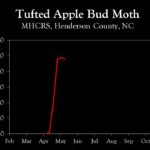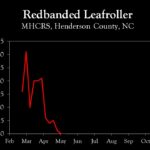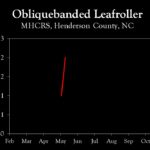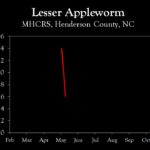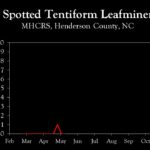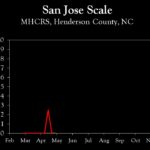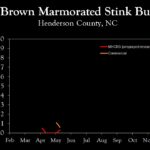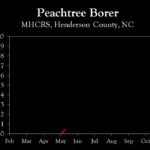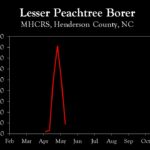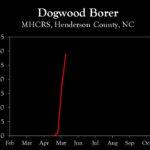WNC Orchard Insect Pest Populations – May 12, 2025
go.ncsu.edu/readext?1072149
en Español / em Português
El inglés es el idioma de control de esta página. En la medida en que haya algún conflicto entre la traducción al inglés y la traducción, el inglés prevalece.
Al hacer clic en el enlace de traducción se activa un servicio de traducción gratuito para convertir la página al español. Al igual que con cualquier traducción por Internet, la conversión no es sensible al contexto y puede que no traduzca el texto en su significado original. NC State Extension no garantiza la exactitud del texto traducido. Por favor, tenga en cuenta que algunas aplicaciones y/o servicios pueden no funcionar como se espera cuando se traducen.
Português
Inglês é o idioma de controle desta página. Na medida que haja algum conflito entre o texto original em Inglês e a tradução, o Inglês prevalece.
Ao clicar no link de tradução, um serviço gratuito de tradução será ativado para converter a página para o Português. Como em qualquer tradução pela internet, a conversão não é sensivel ao contexto e pode não ocorrer a tradução para o significado orginal. O serviço de Extensão da Carolina do Norte (NC State Extension) não garante a exatidão do texto traduzido. Por favor, observe que algumas funções ou serviços podem não funcionar como esperado após a tradução.
English
English is the controlling language of this page. To the extent there is any conflict between the English text and the translation, English controls.
Clicking on the translation link activates a free translation service to convert the page to Spanish. As with any Internet translation, the conversion is not context-sensitive and may not translate the text to its original meaning. NC State Extension does not guarantee the accuracy of the translated text. Please note that some applications and/or services may not function as expected when translated.
Collapse ▲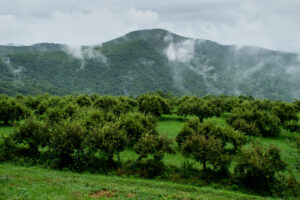 Recent hail in some orchards will surely affect decisions on continuing to invest in pesticide costs, but for those orchards where management will continue, codling moth and preventive applications of miticides for European red mite remain the primary focus this week. Refer to last week’s recommendations for European red mite management.
Recent hail in some orchards will surely affect decisions on continuing to invest in pesticide costs, but for those orchards where management will continue, codling moth and preventive applications of miticides for European red mite remain the primary focus this week. Refer to last week’s recommendations for European red mite management.
Codling Moth: As of May 12, codling moth degree-day accumulations range from about 250 in Henderson County to 475 in Cleveland County. First generation codling moth is most active from about 250 through about 700 or 800 DD, so this pest will remain a threat for the next two to four weeks, depending on location and temperature. The cool and rainy weather since late last week has not been conducive for moth mating, egg laying or survival of larvae hatching from eggs, so from an insecticide perspective it is better to wait until the current weather pattern breaks before making insecticide applications.
As summarized in last week’s codling moth update, codling moth egg hatch begins at about 250 DD, but will vary with population intensity. In orchards with low populations, delaying an initial application until 350 is recommended. However, with the time interval of 250 and 350 only about 5 days and weather not currently conducive for spraying, an application is recommended for most orchards as soon as the weather clears. The exception is in orchards using mating disruption or where pheromone trap captures remain very low.
Learn more about southeastern apple insect pests at the Apple Insect Management page.
2025 Average Weekly Trap Captures
| HENDERSON COUNTY | |||
| Insects per trap | |||
| Apr 28 | May 5 | May 12 | |
| Codling moth | 5.0 | 1.0 | 1.5 |
| Oriental fruit moth | 23.0 | 12.0 | 10.5 |
| Tufted apple bud moth | 48.0 | 49.0 | 48.0 |
| Redbanded leafroller | 1.0 | 0.0 | 0.0 |
| Obliquebanded leafroller | set | 1.0 | 2.0 |
| Lesser appleworm | set | 14.0 | 6.0 |
| Apple maggot (research orchards) | n/a | n/a | n/a |
| Apple maggot (abandoned orchard) | n/a | n/a | n/a |
| Brown marmorated stink bug (commercial) | set | 1.1 | n/a |
| Brown marmorated stink bug (unsprayed research orchard) | 0.0 | 0.0 | 0.3 |
| Spotted tentiform leafminer | 0.0 | 0.0 | 0.0 |
| Dogwood borer | 1.0 | 18.0 | 29.0 |
| Peachtree borer | set | 0.0 | 0.5 |
| Lesser peachtree borer | 81.0 | 49.5 | 9.0 |
| San Jose scale | 2.5 | 0.0 | 0.0 |
*Note that these averages illustrate only the timing of insect emergence and fluctuations in populations, and are not representative of population levels in any given orchard. The only way to have an accurate assessment of an individual orchard’s populations is to set up traps in that orchard.
2025 Accumulated Degree Days
| HENDERSON COUNTY | ||||
| Apr 28 | May 5 | May 12 | ||
| Codling moth (Biofix: April 21) | 116 | 202 | 263 | |
| Oriental fruit moth (Biofix: March 17) | 413 | 666 | 757 | |
| Tufted apple bud moth (Biofix: April 14) | 111 | 343 | 435 | |



